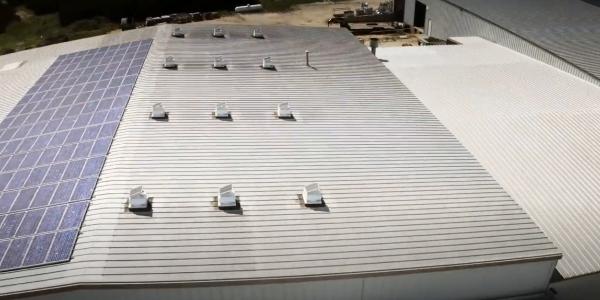The Living Roof Series: Semi-intensive Green Roofs

By Molly Nelson, RCS Intern.
An overview of the characteristics of semi-intensive green roofs and what to know when planning an installation.
Semi-Intensive green roofs combine features from both extensive green roofs and intensive green roofs. Consider this type of living roof as a middle ground that provides the simplicity of an extensive roof, while still being able to withstand large and diverse plants to increase the roof’s aesthetic appeal and water retention abilities.
Other articles for extensive green roofs and intensive green roofs in the Living Roof Series on RoofersCoffeeShop® provide more details on the pre-installation considerations, installation methods and post-installation maintenance required for each roof type. Semi-intensive green roofs have a similar installation process with a few different details to take into consideration, including:
-
Soil depth
-
Weight/structural capacity
-
Maintenance
-
Plant types
Soil depth
The average soil depth that a semi-intensive green roof can withstand is between six and ten inches. This allows for the roof to host a wide variety of plants ranging from mosses and grasses to small shrubs and flowering plants. With a greater soil depth and larger plant growth, the ability of semi-intensive green roofs to retain stormwater is comparable to an intensive green roof, increasing the saturated weight of the roof.
Weight/structural capacity
Semi-intensive green roofs have a greater capacity for retaining stormwater, similar to an intensive green roof. When considering the structural capacity of a roof deck, it is important to use the fully saturated weight standards of this specific living roof. For an average semi-intensive green roof, the full saturated weight can vary between 35 to 50 pounds per square foot. Additional components for maintenance and recreation, like irrigation and pathways, need to be considered in the overall weight.
Plant types
There is more flexibility for creative freedom when selecting plant types for semi-intensive green roofs. Due to a deeper soil layer, a semi-intensive green roof can support both low-maintenance mosses, sedums and grasses like that of extensive green roofs and shrubs, bulbs and flowering plants attributed with intensive green roofs.
When selecting plants for a semi-intensive green roof consider:
-
Water management: Explore plants that have the ability to absorb more water through their roots and can retain any contaminants that would run off into surrounding water systems. For water management, herbaceous plants and shrubs are best.
-
Aesthetics: Depending on the customer, aesthetic plants will vary, but flowering plants and those with interesting foliage will be the best fit. Choose plants that look nice all year to maintain the visual appeal of the roof.
-
Drought: Keep track of the rainfall patterns of the area that you are installing a semi-intensive green roof because different plants can withstand different types of water availability. Succulents and sedums are the most resilient in drought-prone areas.
Maintenance
The amount of maintenance needed on semi-intensive green roofs also varies depending on the types of plants that are used and if an irrigation system is present. As is with extensive and intensive green roofs, more intensive care of the new establishing plants and frequent monitoring of the drainage system for the first two years is crucial. Following this period, roofs without an irrigation system only require a minimum of two visits per year. Roofs with an irrigation system should be monitored and maintained at least once every two weeks.





















Comments
Leave a Reply
Have an account? Login to leave a comment!
Sign In